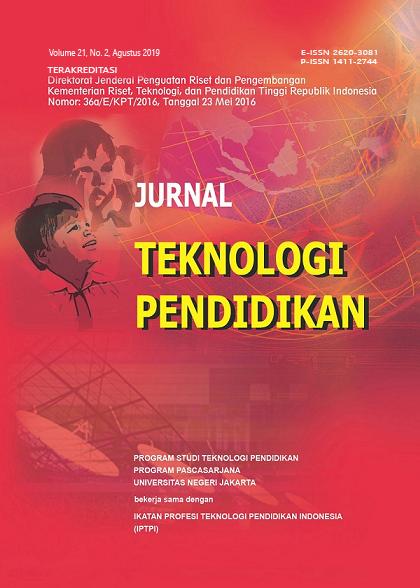Model Perancangan Pembelajaran Blended Mata Kuliah Keilmuan Akuntasi Di ITB-AD Jakarta
A Blended Learning Design Model for Accounting Subjects at Institut Teknologi dan Bisnis Ahmad Dahlan Jakarta
DOI:
https://doi.org/10.21009/jtp.v21i2.11338Keywords:
instructional design, model development, blended learning, accounting courses, design based research, formative researchAbstract
This research aims to build a blended learning design model that can be used effectively and systematically by lecturers in developing blended learning systems for accounting subjects at Institut Teknologi dan Bisnis Ahmad Dahlan Jakarta (ITB-AD). It is important because the research results model can be immediately utilized by accounting lecturers to design blended learning. This study is a design based research in the form of formative research. Data collected by qualitative means through interviews, document analysis, surveys, and observations. The contribution of this study is in the form of a model that is built based on existing learning design models, specifically adapted for learning accounting subjects in ITB-AD, according to the characteristics of students, lecturers, and institutions. The model developed is called the BLADe model.
Downloads
Published
How to Cite
Issue
Section
License
Jurnal Teknologi Pendidikan is an Open Access Journal. The authors who publish the manuscript in Jurnal Teknologi Pendidikan agree to the following terms.
Attribution-ShareAlike 4.0 International (CC BY-SA 4.0)
-
Attribution — You must give appropriate credit, provide a link to the license, and indicate if changes were made. You may do so in any reasonable manner, but not in any way that suggests the licensor endorses you or your use.
-
ShareAlike — If you remix, transform, or build upon the material, you must distribute your contributions under the same license as the original.
- No additional restrictions — You may not apply legal terms or technological measures that legally restrict others from doing anything the license permits.
Notices:
- You do not have to comply with the license for elements of the material in the public domain or where your use is permitted by an applicable exception or limitation.
- No warranties are given. The license may not give you all of the permissions necessary for your intended use. For example, other rights such as publicity, privacy, or moral rights may limit how you use the material.








